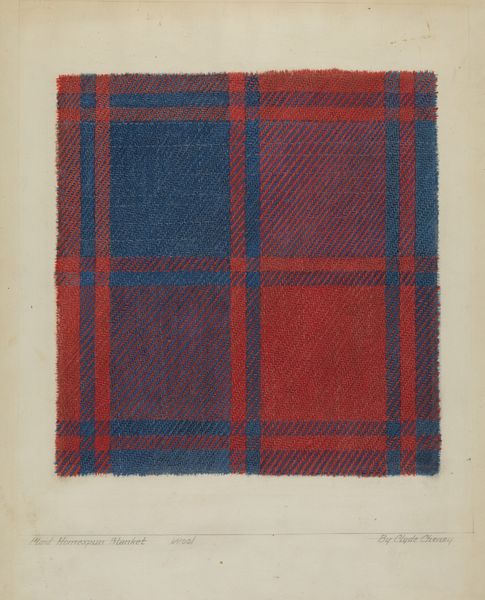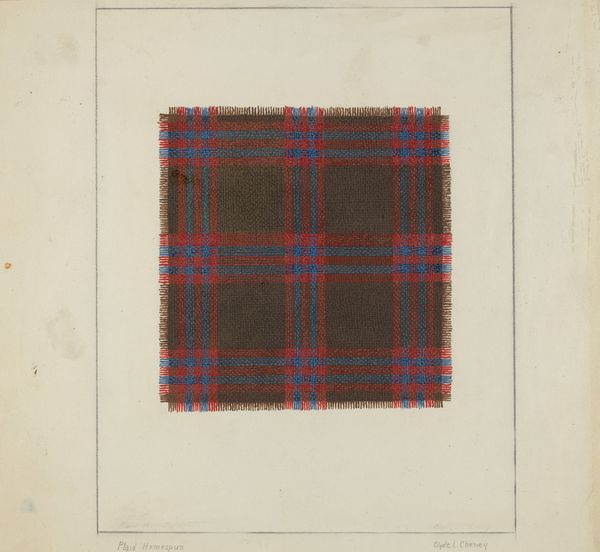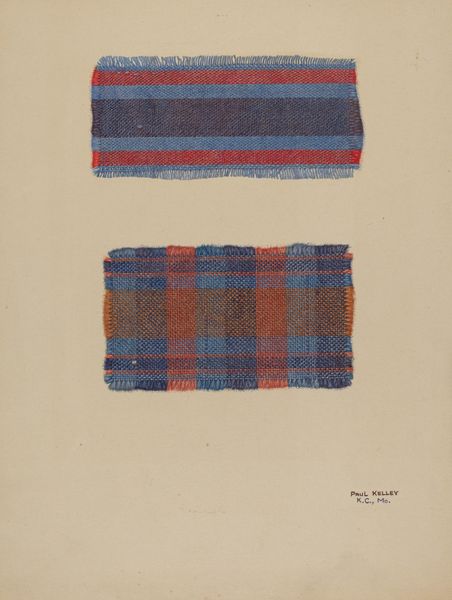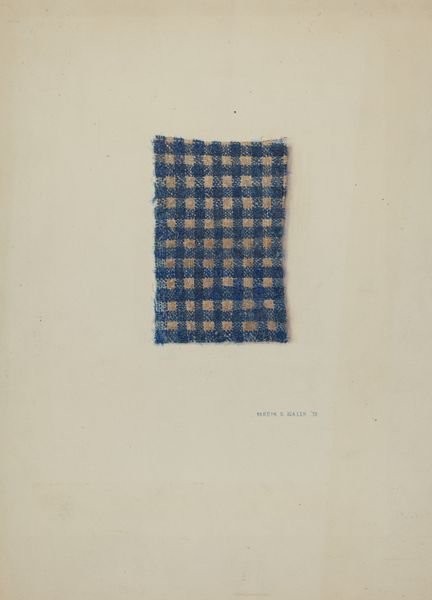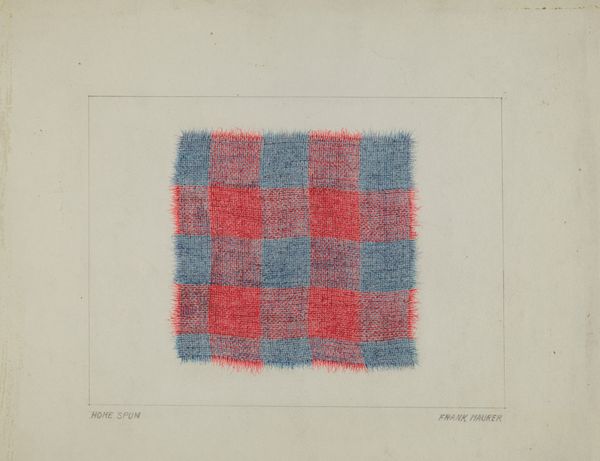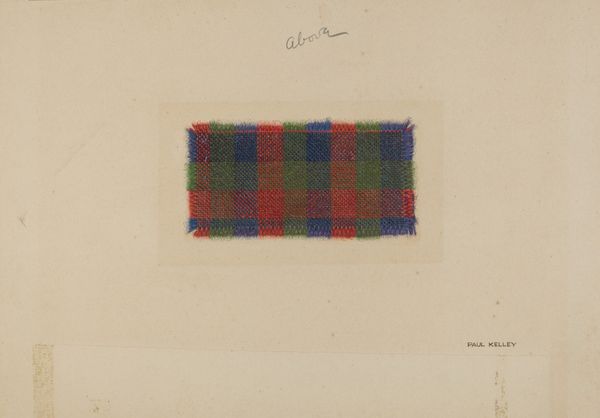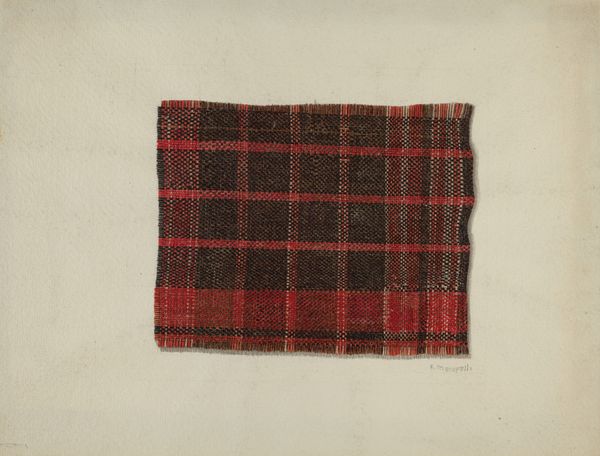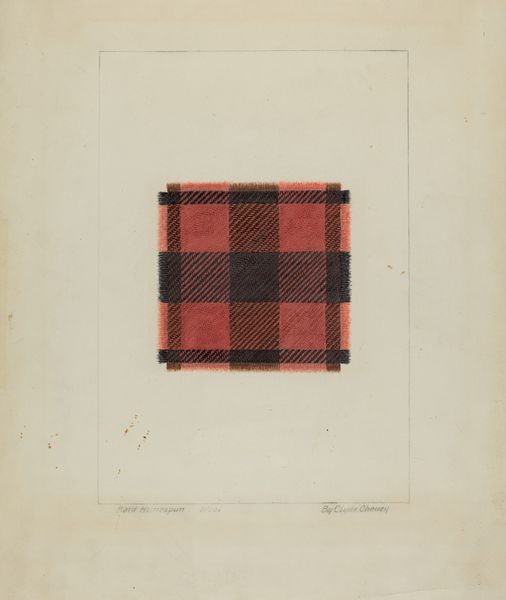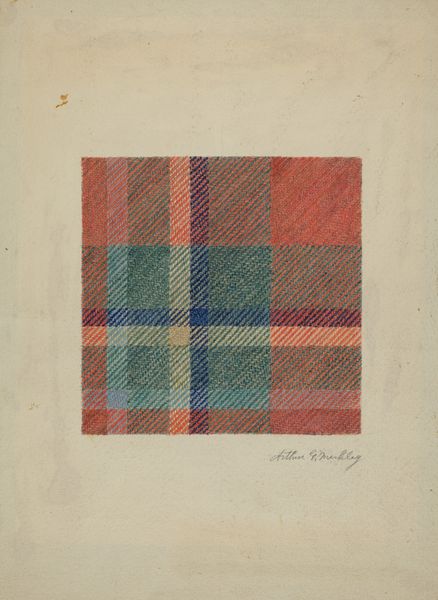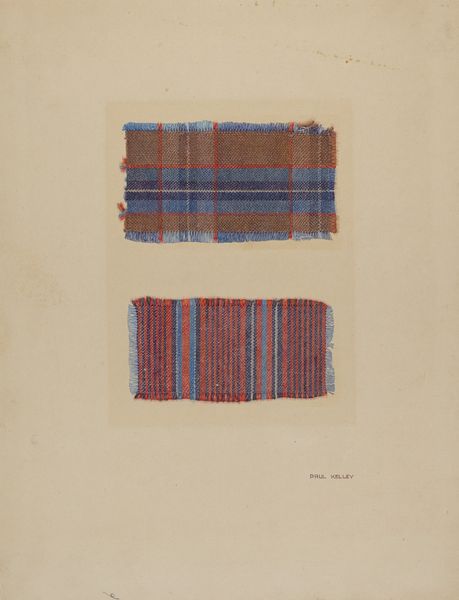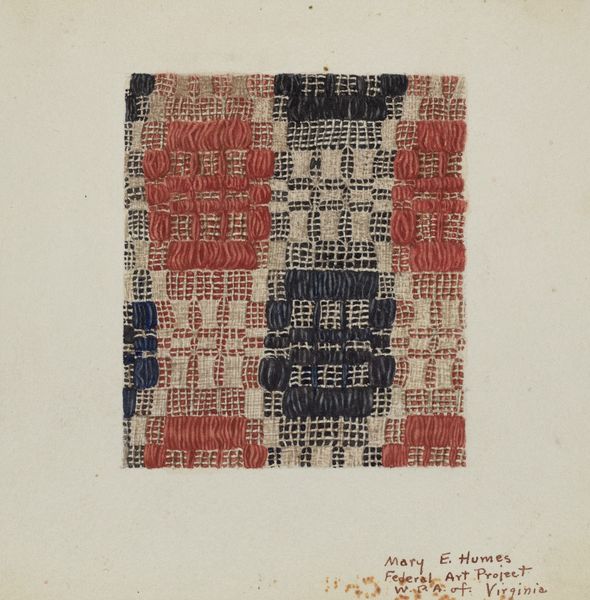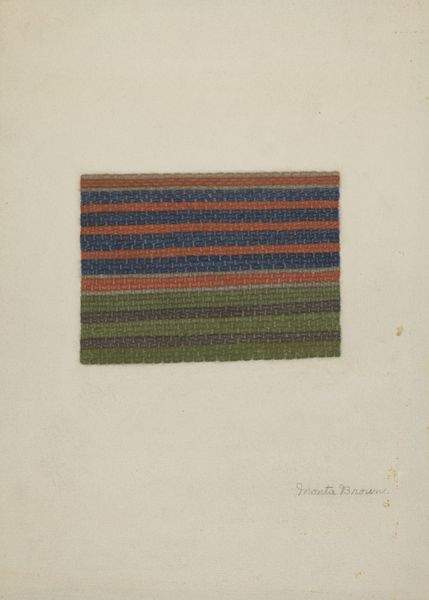
drawing, textile, paper, pencil
#
drawing
#
textile
#
paper
#
pencil
#
watercolor
Dimensions: overall: 20.2 x 26.1 cm (7 15/16 x 10 1/4 in.)
Copyright: National Gallery of Art: CC0 1.0
Editor: Here we have Clyde L. Cheney's "Plaid Homespun Cloth," created around 1937. It's a pencil, watercolor, and possibly textile drawing on paper. The rendering is lovely! What draws your eye when you look at it? Curator: For me, the "homespun" aspect really resonates. During the Depression, the concept of homespun was often aligned with resilience and resistance to mass consumerism, but this piece reminds us of the limitations many faced. Can you imagine what it meant to *have* homespun cloth, to afford the *materials* to weave it? Editor: So, you're saying it might be more than just a cozy, domestic scene? Curator: Absolutely. Think about who had the resources to create or acquire homespun cloth versus those who were excluded. This image could prompt discussions about economic disparity and access to even basic forms of self-sufficiency during that era. Did everyone benefit equally from the idealization of the "home"? Who did these idealized images serve, and who did they exclude? Editor: That definitely shifts my perspective. I was mainly thinking of it as a simple study of fabric. Curator: The layering of artistic intention with societal reality creates a fascinating tension, doesn’t it? Even something as seemingly straightforward as a fabric swatch can reflect deeper societal structures. What about the way that the plaid evokes traditional weaving patterns while simultaneously functioning as an act of economic and perhaps also racial expression? Editor: I never considered the economic implications. Looking at it again, the "homespun" title makes me think about the labor involved and who that labor benefited. Thanks, this has broadened my understanding immensely. Curator: And it is exactly this kind of interrogation of image, identity, and labor that opens up dialogues with the past. I appreciate you sharing your insight.
Comments
No comments
Be the first to comment and join the conversation on the ultimate creative platform.
